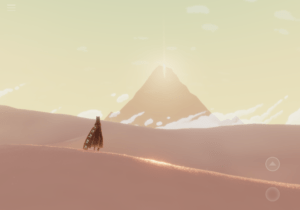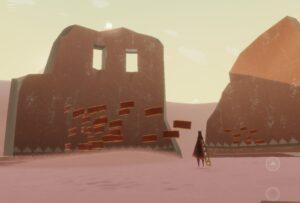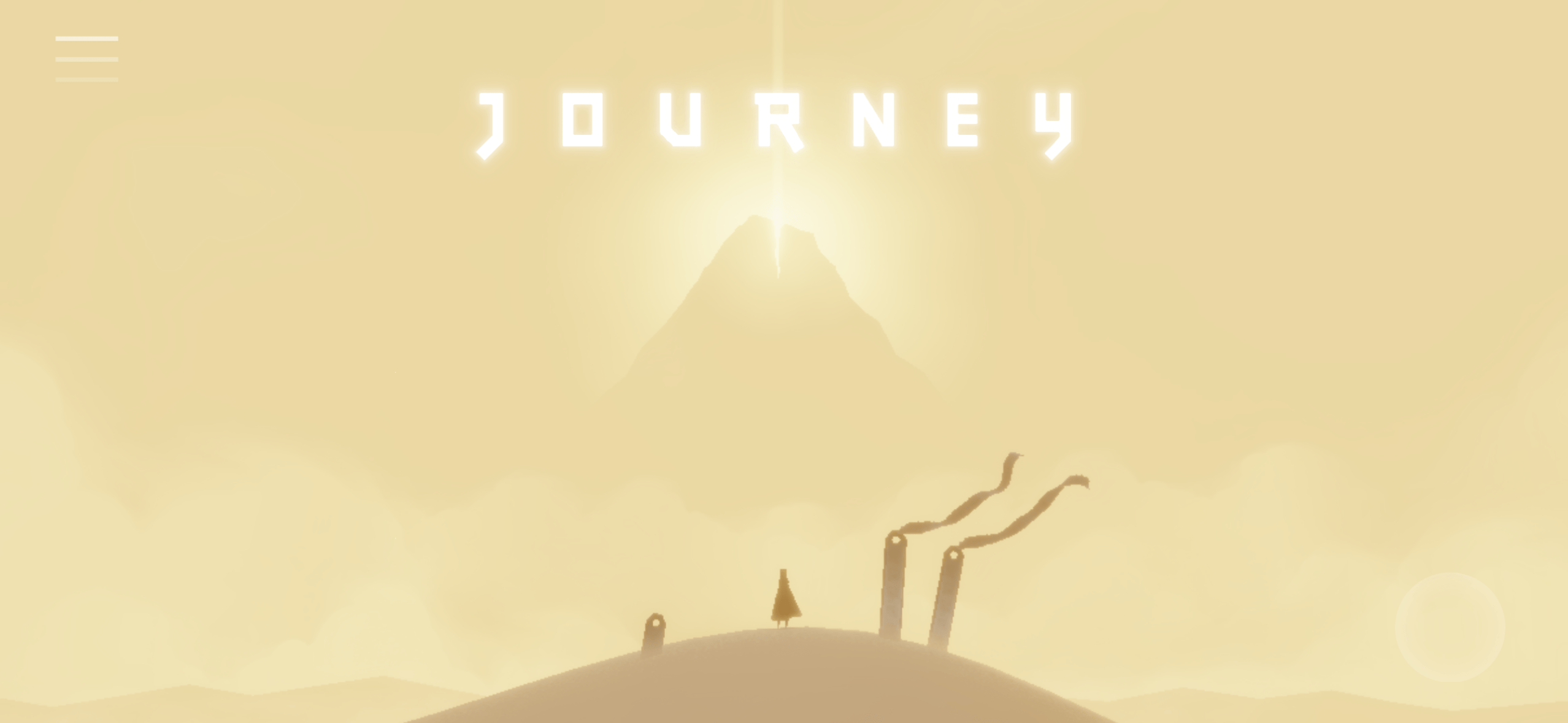Journey is a walking simulator game created by Thatgamecompany. It is available on Playstation, Steam, iOS and other platforms. Its target audience is children and adults aged 5 and up.
In Journey, walking is used to navigate and be immersed in the world around you. The process of walking allows the player to collect narrative information from their surroundings, and “unlock” new parts of the storyline by reaching new locations.
At the beginning of the game, you are immediately placed into the world, which looks like a vast desert. There are no verbal or textual instructions, adding to the air of suspense – you are expected to explore your surroundings by walking through it and determine how to proceed on your own. The way the game quickly prompts you to fully embody the main character, interact with the world and make your own choices effectively creates an evocative space.
I could already start to build up a story in my head just by sensing the atmosphere and observing the environment as I walked through it. There was no sign of life around me, and there was distant music playing in the background. Spread out across the sand dunes were old ruins with broken flags and eerie-looking plaques sticking out of the sand with cryptic codes engraved on them. I wondered what the codes meant, and how the world ended up this way. Just by appealing to my senses, the game created a strong sense of uneasiness and mystery, and piqued my curiosity. This was a great use of environmental storytelling.

[The main character looking out at the world]
Embedded narratives come into play when the player reaches a new key destination and accomplishes the required task. The game subtly nudges you to stay in a certain location by creating “sandstorms” to push you back whenever you try to exit it. This was a smart move by the game designers because it provides the illusion of choice when in fact the player is required to stay in that area. Once you are there, the player needs to figure out what moves they need to take to advance to the next level, or for the journey to progress. Typically, this involves identifying a beam of light and making your way there through a combination of steps (powering up, walking, jumping, finding special tools etc.). When this is accomplished, the game displays new imagery that reveals more information about the storyline. This introduces the aesthetic elements of narrative and challenge that motivate the player to keep going on the journey to “unlock” more parts of the story.
Having played it for the first time, I found Journey to be a fun, unique and visually gratifying game. However, I have a few design suggestions: I felt that there was quite a big leap in difficulty at the start of the game. One second, I was strolling through the sand with limited possible actions; another second, I was in the middle of 6 big ruins, with no idea about how to identify the target and figure out my next move. Especially because there is no textual guidance, there should be a more gradual increase in difficulty to allow players to pattern match and feel less overwhelmed. Another issue was that it was incredibly hard to move forward when I was stuck. An example of this is when I needed to reach the glowing symbol at the top of the ruin, but did not have the power to jump that high.

[Figuring out how to reach the glowing symbol at the top of the wall]
I tried different jump techniques, explored the surroundings to see if I missed anything, but nothing worked. Since there is no mechanism to help the player, I ended up feeling frustrated and did not want to continue. It would be helpful to offer a bit more guidance to push the player in the right direction or towards crucial details. Lastly, the time needed to slowly trudge through the sand felt tedious and unengaging at a certain point. Perhaps the game could allow the player to adjust the speed of movement – for example, moving faster for long distances and only slowing down for agile movements.
Other games in the same genre as Journey are: Dear Esther, What Remains of Edith Finch and The Sailor’s Dream. I believe that Journey stands out from its beautiful visual design, ability to communicate a story nonverbally and engagement of the player just through a few simple elements.



